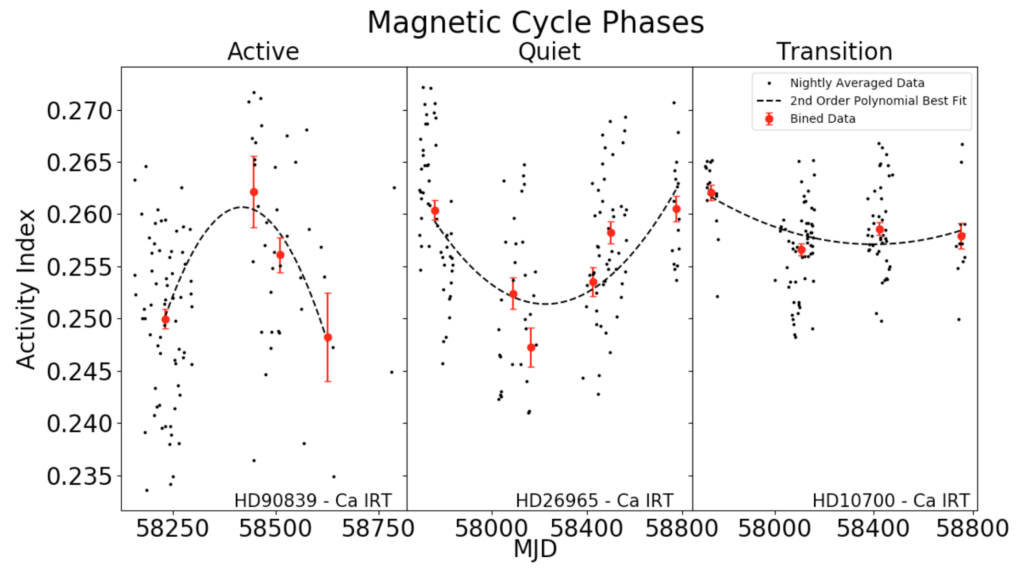
The undergrad research series is where we feature the research that you’re doing. If you’ve missed the previous installments, you can find them under the “Undergraduate Research” category here.
Are you doing an REU this summer? Were you working on an astro research project during this past school year? If you, too, have been working on a project that you want to share, we want to hear from you! Think you’re up to the challenge of describing your research carefully and clearly to a broad audience, in only one paragraph? Then send us a summary of it!
You can share what you’re doing by clicking here and using the form provided to submit a brief (fewer than 200 words) write-up of your work. The target audience is one familiar with astrophysics but not necessarily your specific subfield, so write clearly and try to avoid jargon. Feel free to also include either a visual regarding your research or else a photo of yourself.
We look forward to hearing from you!
************
Francisco Mendez
University of Florida
Francisco Mendez is an alumnus from the University of Florida who recently graduated with a BS in Astrophysics. As part of his senior thesis, he worked with Dr. Jian Ge on detecting the stellar activity of FGK stars. The results of this research project were presented at the Undergraduate Research Symposium at the University of Florida and the AAS 236th meeting.
The detection of Earth-like exoplanets has now become a reality. With the new spectrographs, we can now detect small radial velocity (RV) signals caused by the gravitational pull of the planet(s) on the host star. However, as the mass of the planet drops, the RV signals get weaker. Small RV signals are contaminated by stellar phenomena known as stellar activity, and it can mimic the same periodic RV signals caused by the planet. Therefore, studying stellar activity is crucial for the detection of Earth-like planets.
Whether a RV signal is due to a planet or stellar activity can be distinguished by studying the stellar spectra. We are interested in measuring both magnetic cycles and stellar rotation periods for FGK type stars as part of our stellar activity analysis by using two activity indicators seen in the spectra: the H alpha line and the Ca Infrared Triplet (IRT) lines. The stellar spectra were taken from the Dharma Planet Survey, and this is the first in-depth analysis of stellar activity coming from this survey.
We analyze a sample of 23 stars and by computing the long-term variability of the activity indicators, we expect to detect the magnetic cycles of these stars. To visualize the long-term variability (magnetic cycle) we binned the nightly calculated indices every 150 days, so the short-term noise could be removed. In order to measure the significance in the long-term variability we used a statistical test, known as the F-test, to compare the scatter of the binned data with their uncertainties (see the figure). If the associated probability values (or p-values) were less than 5%, the long-term variability was considered significant. We identified the periodicity of the activity indicators using a Lomb-Scargle Periodogram to find the stellar rotation period.
Our observation time span is not long enough to cover whole magnetic cycles to measure the long-term variability. We were only able to distinguish three different parts of these cycles: Active, Quiet, or Transition phases. For significant long-term variability, 8 stars from the sample show significant variability in the H alpha index and 12 stars in the Ca IRT index. By considering both activity indicators, we were able to measure the rotation period of 12 stars. The most remarkable result is seen for the star HD 115043, for which we measured a rotation period of ~6 days in both activity indicators, matching literature values.

In summary, identifying periodic signals from stellar activity, especially due to rotation, gives confidence that other periodic signals are caused by Earth-like exoplanets. In future work, we will investigate additional activity indicators, including the Ca H & K lines in ultraviolet light, and compare them to those investigated here.
If you are an undergraduate that took part in an REU this summer and would like to share your research on Astrobites, please contact us at submissions@astrobites.org!
"activity" - Google News
July 22, 2020 at 03:10AM
https://ift.tt/2WIA00u
UR #23: Investigating the Stellar Activity of FGK Dwarfs in the Dharma Planet Survey - Astrobites
"activity" - Google News
https://ift.tt/3ddCXMh
https://ift.tt/2WkO13c
Bagikan Berita Ini














0 Response to "UR #23: Investigating the Stellar Activity of FGK Dwarfs in the Dharma Planet Survey - Astrobites"
Post a Comment